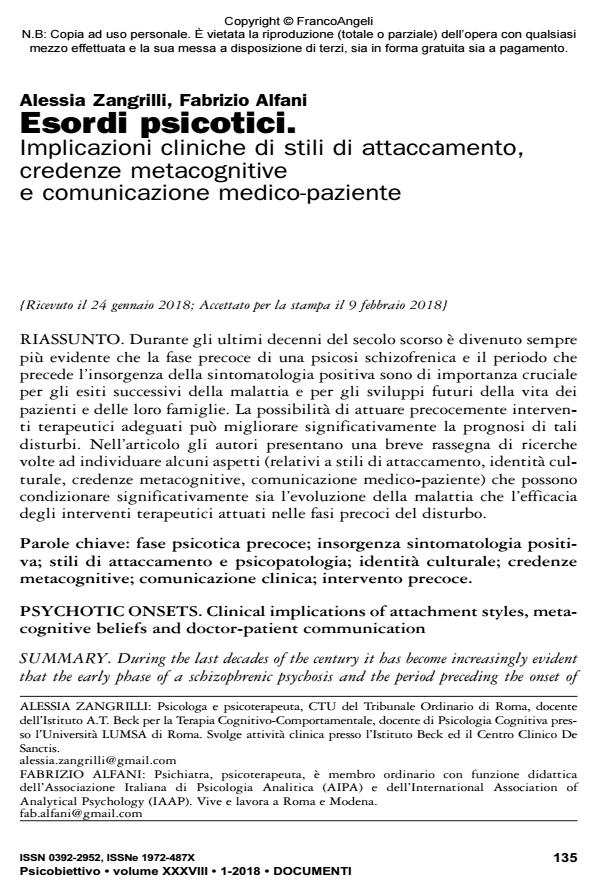Psychotic onsets. Clinical implications of attachment styles, metacognitive beliefs and doctor-patient communication
Journal title PSICOBIETTIVO
Author/s Alessia Zangrilli, Fabrizio Alfani
Publishing Year 2018 Issue 2018/1
Language Italian Pages 11 P. 135-145 File size 121 KB
DOI 10.3280/PSOB2018-001010
DOI is like a bar code for intellectual property: to have more infomation
click here
Below, you can see the article first page
If you want to buy this article in PDF format, you can do it, following the instructions to buy download credits

FrancoAngeli is member of Publishers International Linking Association, Inc (PILA), a not-for-profit association which run the CrossRef service enabling links to and from online scholarly content.
During the last decades of the century it has become increasingly evident that the early phase of a schizophrenic psychosis and the period preceding the onset of positive symptomatology are of crucial importance for subsequent outcomes of the disease and for future developments in the patient’s life and their families. The possibility of early implementation of appropriate therapeutic interventions can significantly improve the prognosis of these disorders. In this paper the authors present a brief review of the research aimed at identifying some aspects (related to attachment styles, cultural identity, metacognitive beliefs, doctor-patient communication) that can significantly affect both the evolution of the disease and the effectiveness of the therapeutic interventions implemented during the early stages of the disorder.
Keywords: Early Psychotic Phase; Onset of Positive Symptomatology; Attachment Styles and Psychopathology; Cultural Identity; Metacognitive Beliefs; Clinical Communication; Early Intervent
Alessia Zangrilli, Fabrizio Alfani, Esordi psicotici. Implicazioni cliniche di stili di attaccamento, credenze metacognitive e comunicazione medico-paziente in "PSICOBIETTIVO" 1/2018, pp 135-145, DOI: 10.3280/PSOB2018-001010